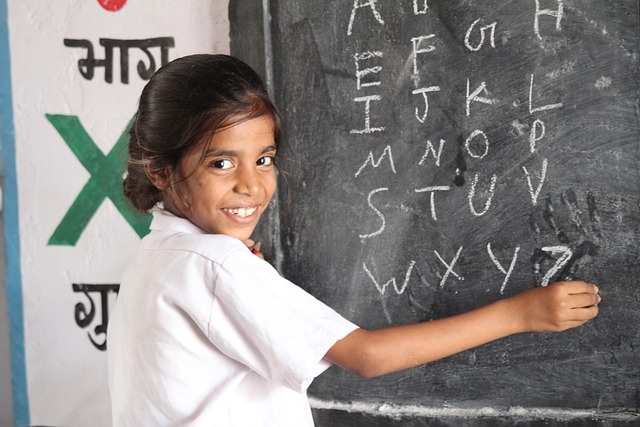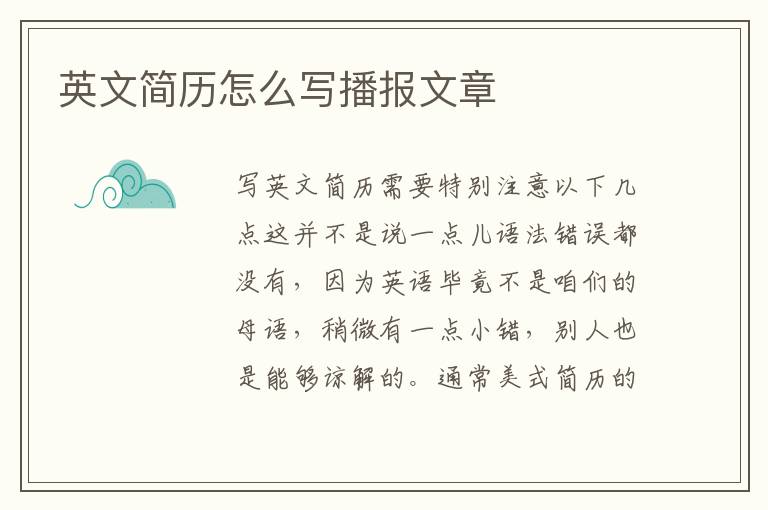2023考研英語閱讀集體行為

Collective behaviour
集體行為
A group s intelligence depends in part on its members ignorance
集體的 智商 部分取決于成員的無知
HUMAN beings like to think of themselves as the animal kingdom s smartest alecks. It maycome as a surprise to some, therefore, that Iain Couzin of Princeton University believes theyhave something to learn from lesser creatures that move about in a large crowd. As he toldthe AAAS meeting in Washington, DC, groups of animals often make what look like wisedecisions, even when most of the members of those groups are ignorant of what is going on.
人類常常自詡為最聰明的動物。事實真的如此嗎?美國普林斯頓大學Iain Couzin認為人類需要向其他生物學習,學習他們的集體行為。正如他在華盛頓美國科學促進會的會議上所說,動物群體往往會做出明智的決定,即便群體中的大多對所發生的事情一無所知。
Coming to that conclusion was not easy. Before lessons can be drawn from critters perchedon the lower rungs of the evolutionary ladder, their behaviour must first be understood.One way to do this is to tag them with devices that follow them aroundmotion-capturesensors, radio transmitters or global-positioning-system detectors that can put a precisefigure on their movements.
得出這個結論并不容易。想要從低等生物上獲得研究結果,首先得了解他們的行為。一種做法就是用儀器來捕捉他們的行動,如:動作捕捉感應器,無線電發射器或全球定位系統探測器,這些儀器可以把他們的動作準確記錄下來。
Unfortunately, it is impossible to tag more than a few individuals in a herd, flock orswarm.Researchers have therefore tended to extrapolate from these few results by usingvarious computer models. Dr Couzin has done quite a bit of this himself. Most recently, hehas modelled the behaviour of shoals of fish. He posited that how they swim will depend oneach individual s competing tendencies to stick close to the others while not actually getting too close to any particular other fish. Itturns out that by fiddling with these tendencies, a virtual shoal can be made to swirlspontaneously in a circle, just like some real species do.
不幸的是,要想標記出一大群動物的行為幾乎是不可能的。研究人員因此傾向于通過使用各種計算機模型來推斷這些鮮為人知的結論。 Couzin博士身先士卒。最近,他用計算機模仿了魚群的行為。他設想,魚群的游動主要取決于每條魚之間的相互擠碰,而實際上并不會擠碰旁邊的其他魚,只是一種趨勢而已。事實證明,魚群內部像這樣彼此間的相互擠碰,不自然的就會是魚群形成螺旋狀。
That is a start. But real shoals do not exist to swim in circles. Their purpose is to help theirmembers eat and avoid being eaten. At any one time, however, only some individuals knowaboutand can thus react tofood and threats. Dr Couzin therefore wanted to find out howsuch temporary leaders influence the behaviour of the rest.
表面如此,但是真正的魚群是不會螺旋狀游動的。他們的真正目的其實是相互幫助覓食和躲避掠食者。然而,任何時候只有魚群中的少數才會會對食物和威脅作出反應。因此,Couzin博士十分想弄明白這些所謂的 領導 是如何影響魚群的行為的?
He discovered that leadership is extremely efficient. The larger a shoal is, the smaller isthe proportion of it that needs to know what is actually going on for it to feed and avoidpredation effectively. Indeed, having too many leaders with conflicting opinions results inconfusion. At least, that is true in the model. He is now testing it in reality.
他發現,領導力至關重要。魚群越大,花在捕食和躲避掠食者方面的精力就越少。而事實上,領導太多,意見相左,就會陷入混亂,至少在模擬試驗中是這樣。現在,他要在真實的環境中開始測試了。
Tracking individual fish in a shoal is hard. Fortunately, advances in pattern-recognitionsoftware mean it is no longer impossible. Systems designed to follow people are now cleverenough not only to track a person in a crowd, but also to tell in which direction his head isturned. Since, from above, the oval shape of a human head is not unlike the oblong body of afish, this software can, with a little tweaking, follow piscine antics, too.
追蹤魚群中的個體十分的困難,幸運的是,外形識別軟件的進步意味著它不再成為不可能。人類行為識別系統已經十分的智能化了,不僅能在人群中追蹤個體,而且還可以告訴他的頭正朝向哪里。從上面看,既然人類頭顱的橢圓形狀與魚類長圓型的體型沒區別不大,那么,這個軟件只需稍加調整便可識別魚了。
機器魚
Robo fish
Dr Couzin has been using a program developed by Colin Twomey, a graduate student at hislaboratory, to track individual fish in a tank. The result is not just a model of shoaling fish,but a precise numerical representation of their actual movements and fields of vision. Thatmeans it is possible to investigate whether real-life fishy leaders have the same effect on agroup as their virtual kin.
Couzin博士一直在使用研究生科林圖梅開發的一個程序,該程序能追蹤魚缸里的魚的行為。研究結果不僅能反映整個魚群的活動,并且能用數字精確地表示出魚群的確切行動和視野。這意味著它可以研究出是否魚群中的 領導 對整個魚群有影響。
Alas, merely observing a shoal does not make it clear which individuals lead and whichfollow. Instead, Dr Couzin has built a biddable robot three-spined stickleback. A preliminarystudy of a shoal of ten flesh-and-blood sticklebacks shows that they do indeed mingle withthe robot and that they follow its leadership cues as predicted. He is now making a robotpredator to see how the shoal reacts to less benign intruders.
唉,只觀察魚群不能說明魚群中誰是領導,誰是追隨者。相反,Couzin博士已經設計了一條機器三刺魚。通過把機器三刺魚跟10條真正的三刺魚混在一起對進行研究正與先前的預測一樣,他們的確聽其號令。現在,博士正在做一個機器捕食者,看看魚群對這些兇惡入侵者將會會做出如何反映。
If the models are anything to go by, the best outcome for the groupin this case, not beingeatenseems to depend on most members being blissfully unaware of the world outsidethe shoal and simply taking their cue from others. This phenomenon, Dr Couzin argues,applies to all manner of organisms, from individual cells in a tissue to voters in the democratic process. His team has already begun probing the question ofvoting patterns. But is ignorance really political bliss? Dr Couzin s models do not yetcapture what happens when the leaders themselves turn out to be sharks.
如果這些模型能夠說明問題,要得出最好的結果沒有被吃掉,似乎取決于魚群中的大多數對周圍所發生的情況一無所知,而只是默默地接受其他魚的暗示。這種現象,Couzin博士認為在所有生物體中都存在,無論是單個細胞生命,還是在民主進程中的選民。博士的研究小組已經著手開始使用這一成果來研究投票形式的問題了,可是,無知真的會帶來政治上的福音嗎?Couzin博士的模型沒能證明,如果魚群中的 領導 變成鯊魚會怎樣?
Collective behaviour
集體行為
A group s intelligence depends in part on its members ignorance
集體的 智商 部分取決于成員的無知
HUMAN beings like to think of themselves as the animal kingdom s smartest alecks. It maycome as a surprise to some, therefore, that Iain Couzin of Princeton University believes theyhave something to learn from lesser creatures that move about in a large crowd. As he toldthe AAAS meeting in Washington, DC, groups of animals often make what look like wisedecisions, even when most of the members of those groups are ignorant of what is going on.
人類常常自詡為最聰明的動物。事實真的如此嗎?美國普林斯頓大學Iain Couzin認為人類需要向其他生物學習,學習他們的集體行為。正如他在華盛頓美國科學促進會的會議上所說,動物群體往往會做出明智的決定,即便群體中的大多對所發生的事情一無所知。
Coming to that conclusion was not easy. Before lessons can be drawn from critters perchedon the lower rungs of the evolutionary ladder, their behaviour must first be understood.One way to do this is to tag them with devices that follow them aroundmotion-capturesensors, radio transmitters or global-positioning-system detectors that can put a precisefigure on their movements.
得出這個結論并不容易。想要從低等生物上獲得研究結果,首先得了解他們的行為。一種做法就是用儀器來捕捉他們的行動,如:動作捕捉感應器,無線電發射器或全球定位系統探測器,這些儀器可以把他們的動作準確記錄下來。
Unfortunately, it is impossible to tag more than a few individuals in a herd, flock orswarm.Researchers have therefore tended to extrapolate from these few results by usingvarious computer models. Dr Couzin has done quite a bit of this himself. Most recently, hehas modelled the behaviour of shoals of fish. He posited that how they swim will depend oneach individual s competing tendencies to stick close to the others while not actually getting too close to any particular other fish. Itturns out that by fiddling with these tendencies, a virtual shoal can be made to swirlspontaneously in a circle, just like some real species do.
不幸的是,要想標記出一大群動物的行為幾乎是不可能的。研究人員因此傾向于通過使用各種計算機模型來推斷這些鮮為人知的結論。 Couzin博士身先士卒。最近,他用計算機模仿了魚群的行為。他設想,魚群的游動主要取決于每條魚之間的相互擠碰,而實際上并不會擠碰旁邊的其他魚,只是一種趨勢而已。事實證明,魚群內部像這樣彼此間的相互擠碰,不自然的就會是魚群形成螺旋狀。
That is a start. But real shoals do not exist to swim in circles. Their purpose is to help theirmembers eat and avoid being eaten. At any one time, however, only some individuals knowaboutand can thus react tofood and threats. Dr Couzin therefore wanted to find out howsuch temporary leaders influence the behaviour of the rest.
表面如此,但是真正的魚群是不會螺旋狀游動的。他們的真正目的其實是相互幫助覓食和躲避掠食者。然而,任何時候只有魚群中的少數才會會對食物和威脅作出反應。因此,Couzin博士十分想弄明白這些所謂的 領導 是如何影響魚群的行為的?
He discovered that leadership is extremely efficient. The larger a shoal is, the smaller isthe proportion of it that needs to know what is actually going on for it to feed and avoidpredation effectively. Indeed, having too many leaders with conflicting opinions results inconfusion. At least, that is true in the model. He is now testing it in reality.
他發現,領導力至關重要。魚群越大,花在捕食和躲避掠食者方面的精力就越少。而事實上,領導太多,意見相左,就會陷入混亂,至少在模擬試驗中是這樣。現在,他要在真實的環境中開始測試了。
Tracking individual fish in a shoal is hard. Fortunately, advances in pattern-recognitionsoftware mean it is no longer impossible. Systems designed to follow people are now cleverenough not only to track a person in a crowd, but also to tell in which direction his head isturned. Since, from above, the oval shape of a human head is not unlike the oblong body of afish, this software can, with a little tweaking, follow piscine antics, too.
追蹤魚群中的個體十分的困難,幸運的是,外形識別軟件的進步意味著它不再成為不可能。人類行為識別系統已經十分的智能化了,不僅能在人群中追蹤個體,而且還可以告訴他的頭正朝向哪里。從上面看,既然人類頭顱的橢圓形狀與魚類長圓型的體型沒區別不大,那么,這個軟件只需稍加調整便可識別魚了。
機器魚
Robo fish
Dr Couzin has been using a program developed by Colin Twomey, a graduate student at hislaboratory, to track individual fish in a tank. The result is not just a model of shoaling fish,but a precise numerical representation of their actual movements and fields of vision. Thatmeans it is possible to investigate whether real-life fishy leaders have the same effect on agroup as their virtual kin.
Couzin博士一直在使用研究生科林圖梅開發的一個程序,該程序能追蹤魚缸里的魚的行為。研究結果不僅能反映整個魚群的活動,并且能用數字精確地表示出魚群的確切行動和視野。這意味著它可以研究出是否魚群中的 領導 對整個魚群有影響。
Alas, merely observing a shoal does not make it clear which individuals lead and whichfollow. Instead, Dr Couzin has built a biddable robot three-spined stickleback. A preliminarystudy of a shoal of ten flesh-and-blood sticklebacks shows that they do indeed mingle withthe robot and that they follow its leadership cues as predicted. He is now making a robotpredator to see how the shoal reacts to less benign intruders.
唉,只觀察魚群不能說明魚群中誰是領導,誰是追隨者。相反,Couzin博士已經設計了一條機器三刺魚。通過把機器三刺魚跟10條真正的三刺魚混在一起對進行研究正與先前的預測一樣,他們的確聽其號令。現在,博士正在做一個機器捕食者,看看魚群對這些兇惡入侵者將會會做出如何反映。
If the models are anything to go by, the best outcome for the groupin this case, not beingeatenseems to depend on most members being blissfully unaware of the world outsidethe shoal and simply taking their cue from others. This phenomenon, Dr Couzin argues,applies to all manner of organisms, from individual cells in a tissue to voters in the democratic process. His team has already begun probing the question ofvoting patterns. But is ignorance really political bliss? Dr Couzin s models do not yetcapture what happens when the leaders themselves turn out to be sharks.
如果這些模型能夠說明問題,要得出最好的結果沒有被吃掉,似乎取決于魚群中的大多數對周圍所發生的情況一無所知,而只是默默地接受其他魚的暗示。這種現象,Couzin博士認為在所有生物體中都存在,無論是單個細胞生命,還是在民主進程中的選民。博士的研究小組已經著手開始使用這一成果來研究投票形式的問題了,可是,無知真的會帶來政治上的福音嗎?Couzin博士的模型沒能證明,如果魚群中的 領導 變成鯊魚會怎樣?









